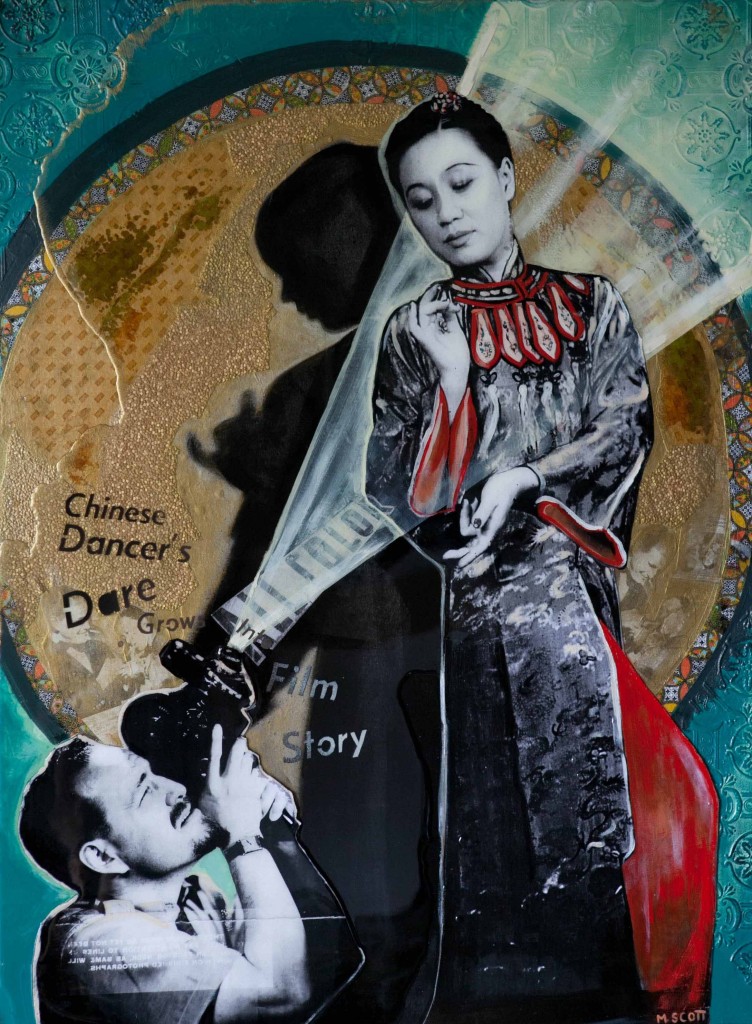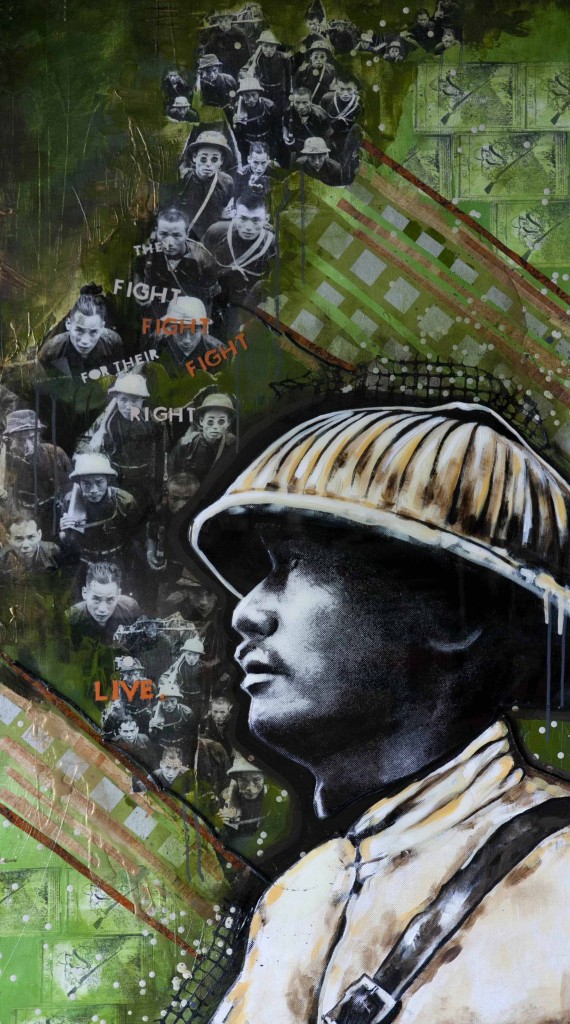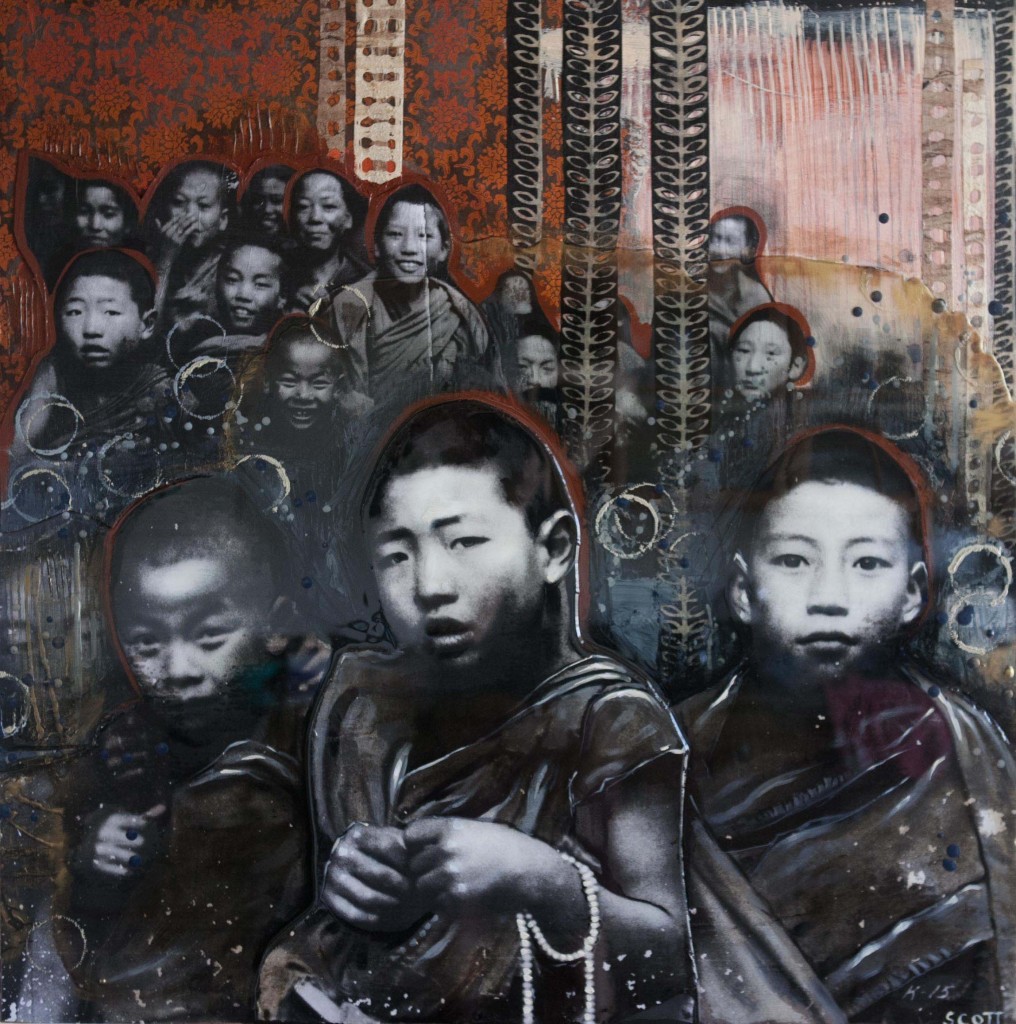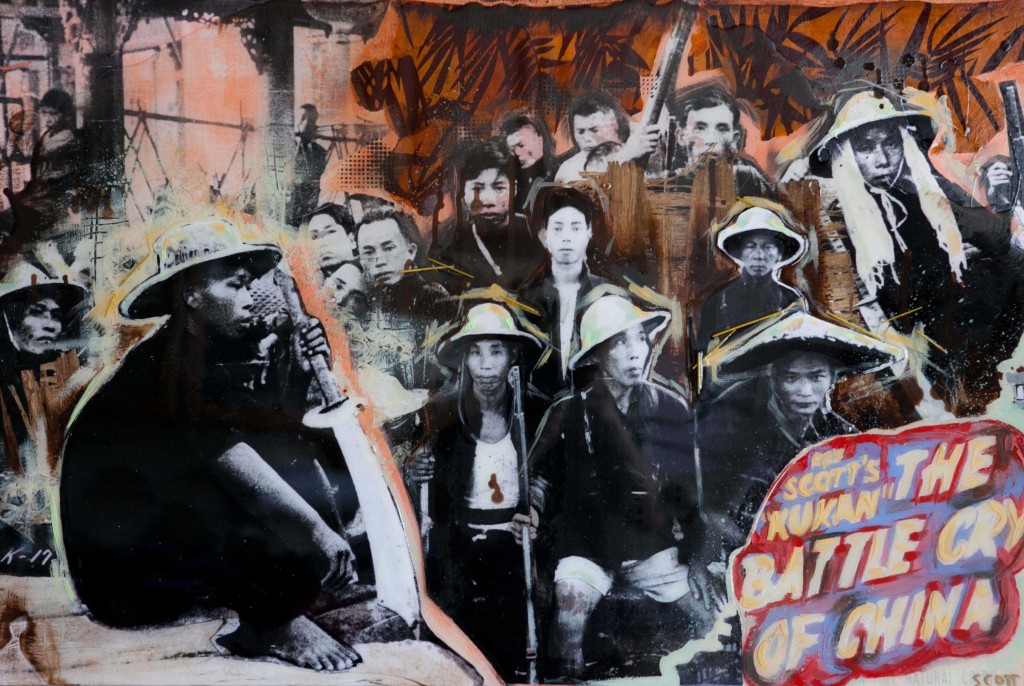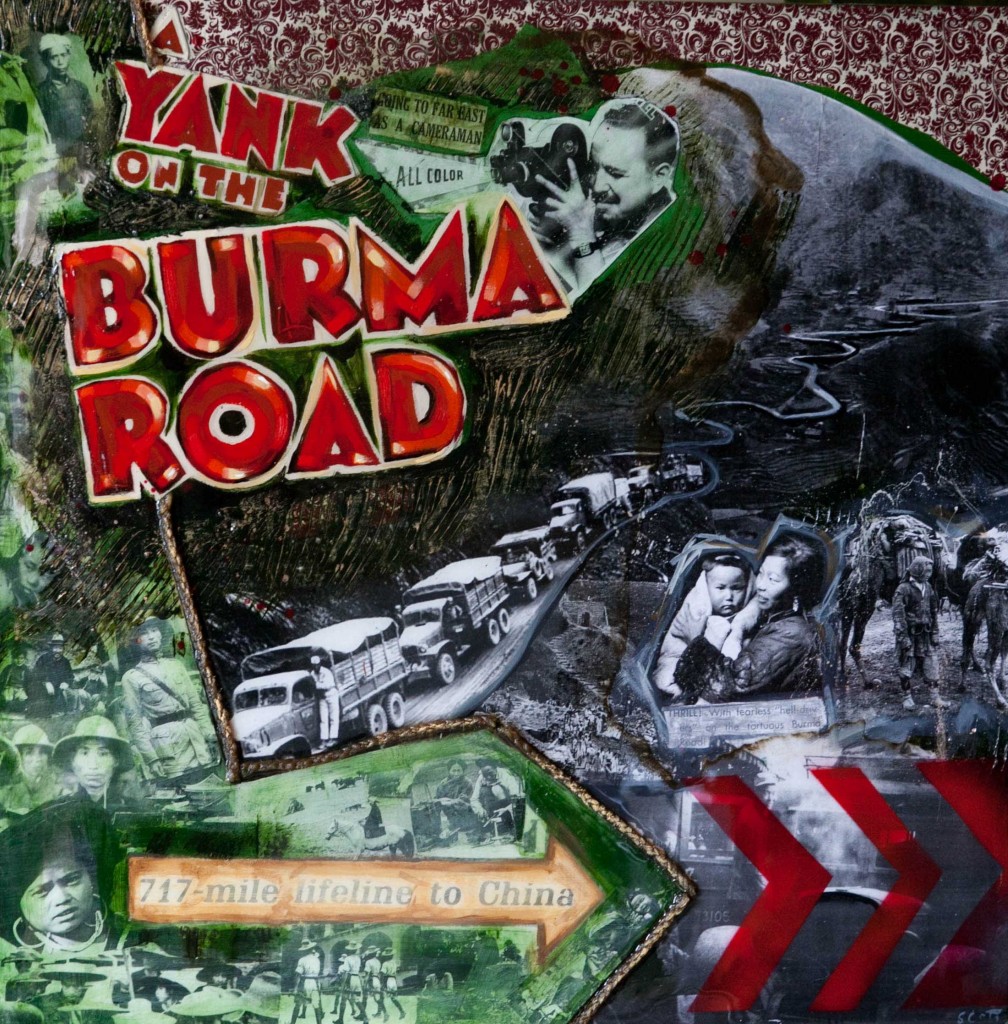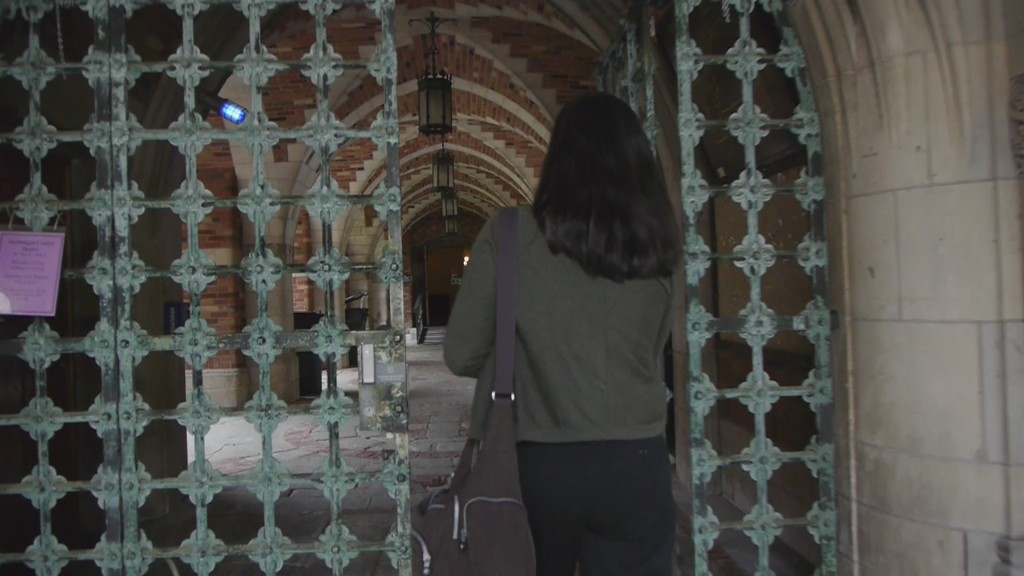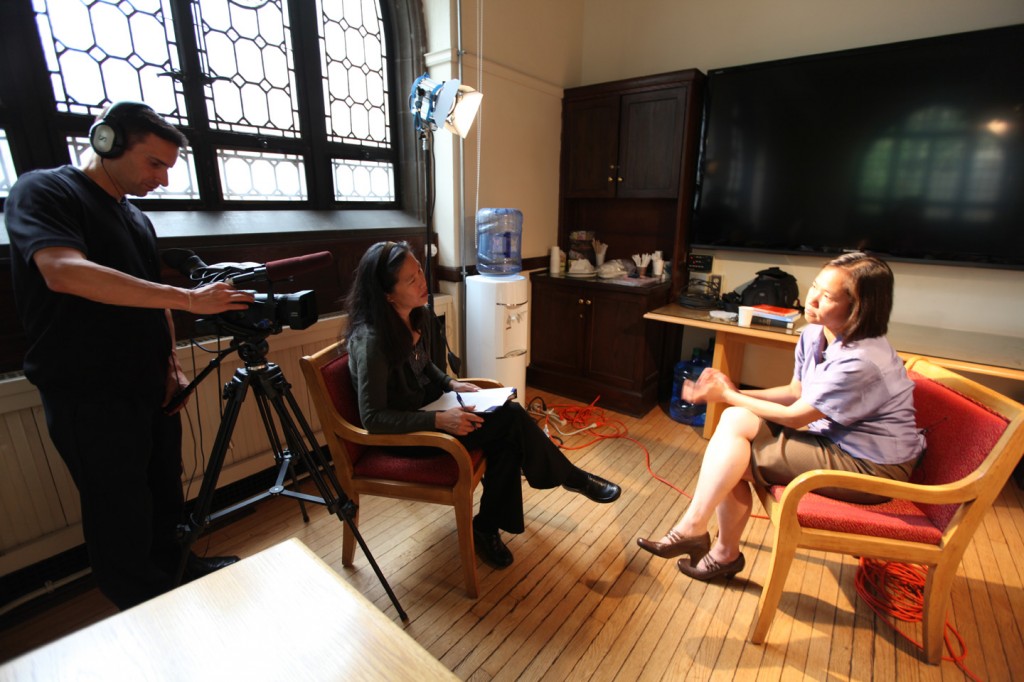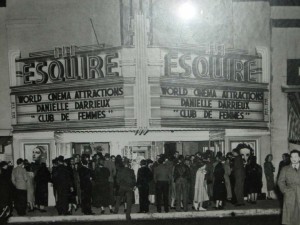Upcoming Screenings:
no event
Follow us on Facebook
HELP BRING FINDING KUKAN TO CLASSROOMS
Sign up for our mailing list.
Category Archives: KUKAN
October 3, 2012 — Michelle Scott Delivers a Knock Out with her KUKAN SERIES
When I first made contact with Rey Scott’s granddaughter Michelle Scott and filled her in a little about the story behind KUKAN, she felt a need to transfer that story into paint and shared with me a vision she had for creating a whole room of paintings dedicated to her grandfather and KUKAN. It seemed like a far-fetched dream back then. So I was more than a little excited to go to Atlanta to witness the opening of Michelle’s solo show — THE KUKAN SERIES. Michelle hadn’t shared any images of the new work with me, so I wasn’t prepared for the visual sweep and emotional power of the work. It literally brought me to tears. Here are a few choice pieces from the show. WARNING — these photos do not do the pieces justice. The real pieces have an almost three-dimensional quality that allows the viewer to enter into the scene and experience a little of Rey Scott and Li Ling-Ai’s world back in the late 30’s.

Artist Michelle Scott with “Start of a Journey” the exclusive premium available for a $5,000 Kickstarter pledge (partially tax deductible).
The 36“X36” piece that Michelle created exclusively for our Kickstarter fundraising drive is displayed right in the front window of 2Rules Fine Art in Marietta. Casual strollers walking down the sidewalk can’t help but be pulled in to find out with the imagery is all about. For close up details of this painting go to our Kickstarter home page.
The KUKAN Series contains a few gorgeous tributes to Li Ling-Ai the Chinese American author who was the uncredited co-producer of KUKAN with Rey Scott.
The work below contains images of Li Ling-Ai from three different decades and three different locations (the old Honolulu Academy of Art, Beijing China, and New York City)
There are also fabulous pieces that provide a visual montage of the China witnessed through Rey Scott’s camera. He took both stills and 16mm color movies. Some of his old cameras are on display too with the original stills.
Rey Scott traveled all the way to Tibet and filmed some of the first color footage of prayer rituals there.
Michelle’s take on the original KUKAN lobby cards for the United Artists version of the film.
Rey Scott also filmed the famous Burma Road as it was being built.
A reminder of the British influence in Hong Kong which fell to the Japanese in 1941.
A whole movie could be made just about the baby giant panda bear that Rey Scott brought from Chengtu to the Chicago Zoo. Originally christened “Li Ling-Ai” by the foreing journalists in Chungking, it was later named Mei Lan when it was identified as a boy panda bear.

“Portrait of a Lady” and “For Him” are the first two pieces that Michelle Scott made in the KUKAN Series
There are many more gems in this show. But the emotional highlight for me was being able to see the first two portraits of Rey Scott and Li Ling-Ai that Michelle did. I first saw them on her website before we even knew each other and before she even knew who Ling-Ai was. This was the first time I was able to see them both in person. Since the pieces had been sold to different collectors several years ago, this was also the first time they were reunited in the same room for quite some time — a symbol of hope for me as I continue to seek funding to finish FINDING KUKAN.
If you are in the Atlanta area make an effort to see this historic show — up only until October 26, 2012
September 8, 2012 — Fashion Photos Discovered
Late tonight I am putting off writing a presentation for upcoming October events and browsing the wonderful photos of Li Ling-Ai that Softfilm blogger Durian Dave discovered in the LIFE photo archives. These are all of a United China Relief Fashion show in May 1941 and taken by Alfred Eisenstadt (note KUKAN would premiere the following month in NYC — it must have been a heady time for Li Ling-Ai).

Li LIng-Ai models traditional Chinese robe at May 1941 fashion show for United China Relief.
I love seeing this crowd shot of all the NYC socialites wearing their hats. While viewing these photos, a bell rang in my head and I remembered some of my research at the Columbia Rare Book and Manuscript Library. A fashion show had been held at the Hotel Pierre. Sure enough, I compared a current photo of the penthouse ballroom and the archways are the same. I got chills remembering that I had been to a wedding at that same spot back in the 90’s.
I had no idea that Li Ling-Ai participated in the fashion show when I took those notes at Columbia a couple of years ago.

Li Ling-Ai, with actress K.T. Stevens, James Blaine, Lee Ya Ching, and unidentified Chinese woman
Li LIng-Ai is seen here posing with James Blaine, national chairman of United China Relief and the president of Marine Midland Trust. He was just one of the NYC CEOs that Henry Luce recruited to lead the huge fundraising effort to aid China prior to WWII.
These photos bring this 1941 event to life for me in a whole new way. However, LIFE photographs are notoriously expensive to license. So if I’m going to use them in the documentary, I’m going to have to have a fundraiser myself. Speaking of which… Be on the lookout for our Kickstarter launch in October, and if you’re in Honolulu on October 28, come to our “Night in Old Shanghai” cocktail party benefit where we will pay homage to the efforts of these 1941 fashionista fundraisers.
August 10, 2012 — Li Ling-Ai 75 Years Ago
When I was invited recently to participate in a conference to commemorate the 75th anniversary of the Nanking Massacre this coming December, I realized that the film KUKAN also celebrates a whole string of 75th year anniversaries. Today happens to be the day that Li Ling-Ai (aka Gladys Li) appeared on the front page of the Honolulu Star Bulletin newspaper, lauded for her desire to fly a plane to support China’s resistance to Japanese invasion.
A month before this Amelia Earhart’s plane disappeared. It’s a reminder that in 1937 airplane flight was still relatively new and few women were undertaking the risky hobby.
Flying a plane is just one of the pioneering feats of Li Ling-Ai and what brought her to the attention of the Advertiser reporter Rey Scott who would eventualy become her filmmaking partner on Kukan.
Also noteworthy is that the author of the Star Bulletin article, May Day Lo, was one of the first Asian American female reporters on a major city newspaper.
Have any other 75th anniversaries to share? Feel free to comment.
June 28, 2012 — A Visit to Yale and Chinese Exclusion
The recent FINDING KUKAN shoot at Yale University brought out the perpetual student in me. You can’t help but be awed by the vaulted ceilings and Knights of the Round Table atmosphere of the Hall of Graduate Studies where my interview with Yale Professor of American Studies Mary Lui took place.
The building reminds you how much history has come before you and how much you are ignorant of.
Fortunately the halls of learning at Yale are populated by people like Mary who dedicate their lives to gathering knowledge and disseminating it to people like me.
In trying to understand the social climate that prompted Li Ling-Ai and Rey Scott to risk money and life to make KUKAN, Mary Lui reminded me that the behavior of Chinese Americans like Li Ling-Ai was still governed in part by prejudicial immigration laws enacted against the Chinese — the most infamous one being the Chinese Exclusion Act passed in 1882.
Meant to keep cheap labor from entering the US, the exclusion laws ended up doing much more than that. From restricting the formation of Chinese families, to rendering the few Chinese women around at the time exotic creatures with questionable backgrounds the Exclusion Laws had negative repercussions on even the richest and most educated Chinese Americans. It’s no wonder that with so few Chinese Americans around that stereotypes and misconceptions about them would form.
I came back to Hawaii much better prepared to appreciate the historic bill recently passed by Congress to officially apologize for the prejudicial laws that targeted Chinese and other Asians in America for over 80 years.
One of the stereotypes I had about my own ethnic background was that Chinese don’t make waves and passively accept their fate, letting bygones be bygones.
The courageous efforts of people like Congresswoman Judy Chu and organizations like the 1882 Project belie that stereotype and bring a new validation to the history of Asians in America that will hopefully prompt more stories about an era of exclusion that we still don’t know enough about.
Are there ways that exclusion laws have affected your life? Let us hear from you.
February 19, 2012 — What do HUGO and FINDING KUKAN have in common?

Martin Scorce’s HUGO is a tribute to film pioneer Georges Melies
Like many people who were charmed by Scorcese’s recent film HUGO, I had little knowledge of early film history or Georges Melies before seeing the movie, so I headed to the internet afterwards to find out a little more about him.

Ben Kingsley (center right, as Georges Melies) confers with director/producer Martin Scorsese (far right) on the set of HUGO, from Paramount Pictures and GK Films. Photo: Jaap Buitendijk.
Although Melies is recognized today as an early film innovator with a fabulous imagination, he fell out of favor during his lifetime and many of his films were melted down or destroyed.

Still from Melies’s THE MAN WITH THE RUBBER HEAD
While reading about Melies, I ran across Wikipedia’s list of Rediscovered Films. Happily a couple of Melies’s films from the 1890s have been rediscovered in this century.
Scrolling down the list, look what film shows up in the 1940’s … Rey Scott’s KUKAN!
And that’s the answer to a film trivia question that might someday be asked on a game show in the far future – HUGO and FINDING KUKAN are both about rediscovering lost films and forgotten filmmakers.

In 1961 the French government issued a postage stamp in honor of Georges Melies’s cinematic contributions.
Maybe someday KUKAN, Rey Scott, and Li Ling-Ai will have a postage stamp dedicated to them too.
December 1 to 31, 2011 — Producer/Director Robin Lung Featured on Career Changers TV
Although I’m more comfortable being behind the camera than in front of it, I agreed to be profiled on OC 16’s Career Changers TV show in order to get the word out about FINDING KUKAN. Producer Rich Figel and Cameraman/Editor Stan Chang managed to boil my life of job-hopping down to a succinct 4 minutes or so. Even better, the lead in and out of the piece made people really want to see the work-in-progress trailer and learn more about KUKAN. The show airs through December on digital channel 16 or 1016 in Hawaii. The show is rebroadcast Fri 2:30pm, Sat 6:30pm, Sun 12:30am, Mon 9:00am, and Wed 2pm and Thur 8:30pm through December. If you can’t catch it, here is a low resolution version.
You can see the nice lead up to the trailer here. And a fabulous article Rich wrote about “The Mystery of Li Ling-Ai” here.
December 2, 2011 — Gifts From the Blogosphere
There’s nothing like having a cold over the holidays to make you feel sorry for yourself. It’s that old dejected feeling that creeps in as the box of kleenex gets emptied. Now that I’ve recovered, I’m having some belated Thanksgiving thoughts, tallying up the windfalls that have come my way over the past year — many by way of the internet and blogosphere. Recently I made an internet connection with blogger Durian Dave, who turned out to be a very generous like-minded soul with an incredible visual archive and wealth of knowledge about old Chinese films and film actresses. See his blog and Tumblr for hours of entertaining and eye-opening articles and photos. David advanced my KUKAN research tremendously by sending a bunch of choice KUKAN related items to me, including this vintage lobby card.

Lobby card for the 1941 Oscar-winning documentary KUKAN
Besides displaying gorgeous color and imagery, the card had an intriguing embossed stamp on the bottom of it: “STATENS FILMCENSUR 1947–48.” David suspects that the stamp refers to Sweden’s censorship board. If he’s right, that means KUKAN screened all the way in Sweden! So if any of you Swedish film collectors come across 16mm Kodachrome color footage of China that appears to be from 1939 or 1940, let me know! We’re still looking for good partial prints to help with the KUKAN restoration.
My next post will feature the fabulous photo of a jet-setting Li Ling-Ai that Durian Dave dug up as well as info about a couple of other groundbreaking Chinese American females working behind the camera. Why not now you might ask. Hey, I’m still recovering!
October 19, 2011 — FINDING KUKAN Excerpts Screen at Evening with Jiang Wen
Two work-in-progress excerpts from FINDING KUKAN (one in its first public showing) will screen as the “opening act” for the University of Hawai‘i sponsored Evening with Jiang Wen, the famous Chinese actor/director who is in Hawai‘i as the featured filmmaker for the 2011 Hawai‘i Intternational Film Festival.
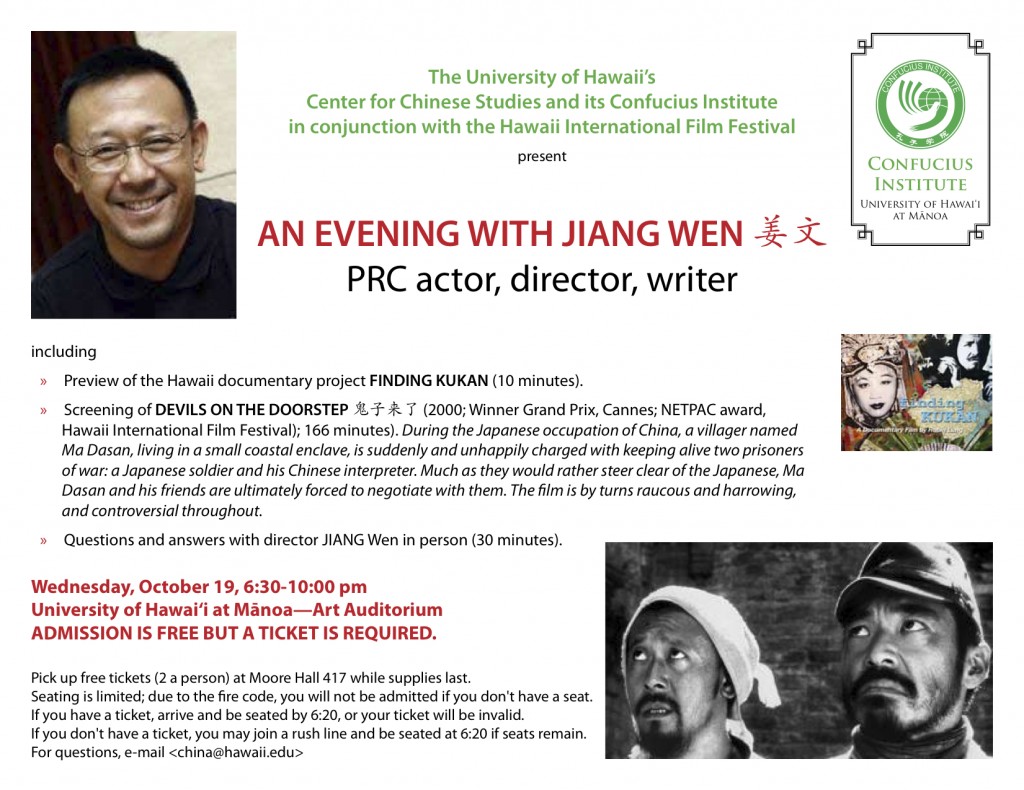
Flyer for FINDING KUKAN Screening at University of Hawai‘i sponsored Evening With Jiang Wen
The evening should be a very special one, and bound to bring great exposure to FINDNG KUKAN. Check it out if you are in the area.or pass the word on to others. Note that the screening is free, but you need a ticket to get in the door. They expect a capacity crowd, so get your tickets early. They are available at UH Moore Hall 417.
May 21, 2011 — Official FINDING KUKAN Website Goes Live
“If you build it.…they will come.”
I’m adapting the lines from the great baseball book/movie Shoeless Joe/Field of Dreams and hoping they’ll apply to this website and eventually to the finished documentary FINDING KUKAN. Since this project has been fueled by online research and discoveries made possible by other websites, it’s only appropriate that I put out one of my own. Now it’s up to the cyberspace gods to work their magic…


